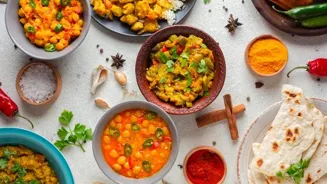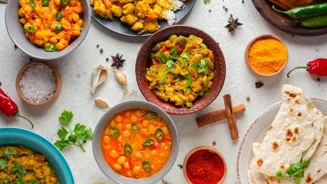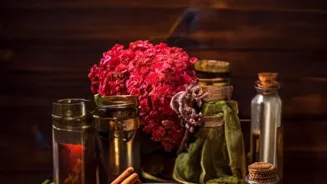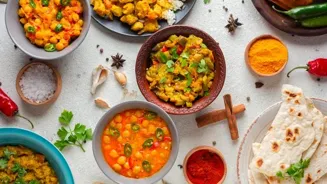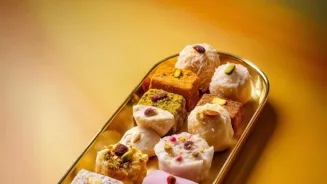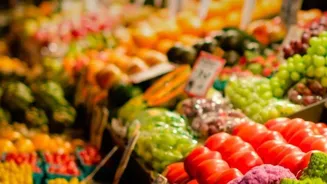Discover the vibrant world of South Indian cuisine with 7 must-try dishes! From crispy dosas to comforting pongal, this article takes you on a flavorful journey. Dive in and tantalize your taste buds!
South Indian cuisine, a vibrant tapestry of flavors, aromas, and textures, is a delightful experience for the taste buds. From the tangy sambar to the crispy dosa, each dish tells a story of tradition and culinary artistry.
This article delves into seven must-try vegetarian dishes that capture the essence of South Indian gastronomy, promising a flavorful journey for both seasoned foodies and curious beginners. Get ready to embark on a culinary adventure that will leave you craving for more!
Idli and Sambar: A Classic Combination
Idli and sambar is perhaps the most iconic South Indian breakfast. Idlis are steamed rice cakes, incredibly soft and fluffy, made from fermented rice and urad dal batter. This fermentation process gives them a slightly tangy taste and a light, airy texture.
They are traditionally served with sambar, a lentil-based vegetable stew with a tangy tamarind base. Sambar typically includes vegetables like drumsticks, pumpkin, tomatoes, and okra. The combination of the mild idli and the flavorful sambar is a match made in culinary heaven.
The dish is not only delicious but also incredibly healthy, as steaming preserves nutrients and fermentation aids digestion. Accompanied by coconut chutney, the idli-sambar combo provides a wholesome and satisfying start to the day.
Different types of chutney, like tomato or coriander-mint, can be paired too which enhances the flavour and has a different taste altogether.
Dosa: Crispy Perfection
Dosa is a thin, crispy pancake made from fermented rice and lentil batter, similar to idli but prepared on a hot griddle. The batter is spread thinly on the griddle and cooked until golden brown and crispy. Dosa is incredibly versatile and can be filled with a variety of ingredients.
The most popular variant is masala dosa, which is stuffed with a spiced potato filling. Other variations include plain dosa, paper dosa (extra thin and crispy), and rava dosa (made with semolina). Dosa is typically served with sambar and chutney, offering a delightful mix of textures and flavors.
The crispiness of the dosa complements the soft filling and the tangy sambar. Dosa remains a sought-after dish and is made popular due to its versatility and customisation options.
One of the most famous types is the Onion Rava Dosa, which makes use of wheat to make a crispy outer layer and taste even better with a bit of spice.
Uttapam: The Indian Pizza
Uttapam is often described as the Indian version of pizza, but it's much more than that. It's a thick pancake made from the same fermented rice and lentil batter as idli and dosa. But instead of being crispy, uttapam is soft and slightly spongy.
What sets uttapam apart is the toppings that are mixed into the batter while cooking. Common toppings include onions, tomatoes, green chilies, and coriander. This versatile dish can be customis ed to include any assortment of veggies available locally.
The toppings add flavour, texture, and visual appeal to the dish. Uttapam is typically served with sambar and chutney, offering a diverse taste experience. It's a hearty and satisfying dish that can be enjoyed for breakfast, lunch, or dinner.
The most common type is Onion Uttapam, but Tomato and Capsicum go really well too.
Vada: Crispy and Savory
Vada is a deep-fried fritter made from lentils or potatoes. These savory treats come in various shapes and flavors, each region having its unique recipe. Medu vada, made from urad dal, is a popular variety.
It's shaped like a doughnut with a hole in the middle and is crispy on the outside and soft on the inside. Another popular vada is masala vada, made from chana dal mixed with spices and herbs. Vada is typically served with sambar and chutney, and it's a perfect snack or side dish.
The crispy texture and savory flavor make it a great companion to the tangy sambar and refreshing chutney. There are many different types of vada available, and each one has its specific ingredients. These are served with sambar and chutney.
Pongal: A Comforting Delight
Pongal is a rice and lentil dish, prepared for the harvest festival of the same name. There are two main varieties: sweet pongal (sakkarai pongal) and savory pongal (khara pongal). Sweet pongal is made with rice, moong dal, jaggery, and ghee, flavored with cardamom and nuts.
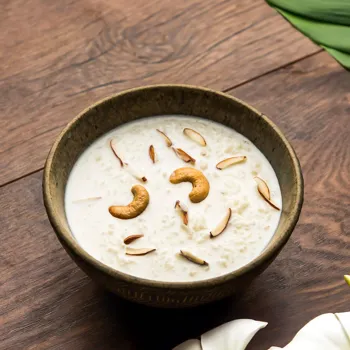
Savory pongal is made with rice, moong dal, spices, and ghee, with a hint of pepper and ginger. Both versions are incredibly comforting and wholesome. Pongal is a symbol of prosperity and is often prepared during auspicious occasions.
The creamy texture and aromatic spices make it a comforting and satisfying meal. It's usually served hot, and is simple in taste but loaded with good nutrition. Some additions, such as cashews or other dry fruits, can enhance its taste.
Bisi Bele Bath: A Flavorful Medley
Bisi Bele Bath is a popular dish from Karnataka, a flavorful rice and lentil dish cooked with vegetables and a unique spice blend. The spice powder, known as Bisi Bele Bath masala, is a combination of various spices, including coriander, cumin, cinnamon, cloves, and nutmeg.
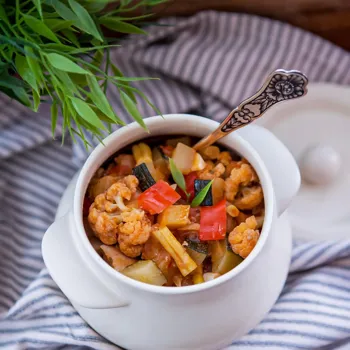
The dish is cooked with tamarind pulp, which adds a tangy flavor. Vegetables like carrots, peas, beans, and potatoes are often included in the dish. Bisi Bele Bath is a complete and satisfying meal in itself, offering a balanced mix of carbohydrates, proteins, and vegetables.
It's often served with raita or papadum. There are several ready to eat mixtures of its spices available in the market.
Payasam: A Sweet Finale
No South Indian meal is complete without a sweet ending, and payasam is the perfect choice. Payasam is a creamy rice pudding, made with milk, sugar, and flavored with cardamom and nuts. There are various types of payasam, each with its unique ingredients and flavor.
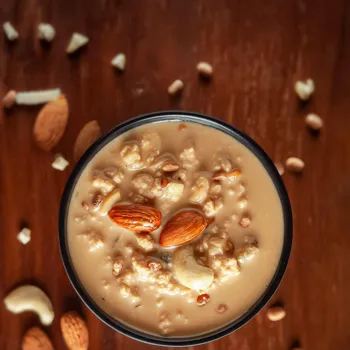
Ada pradhaman is a traditional Kerala payasam made with rice flakes, jaggery, and coconut milk. Semiya payasam is made with vermicelli, milk, and sugar. Payasam is a delightful and comforting dessert that is perfect for any occasion.
The creamy texture and aromatic spices make it a truly indulgent treat. It is served during festivals.
AI Generated Content. Glance/InMobi shall have no liability for the content